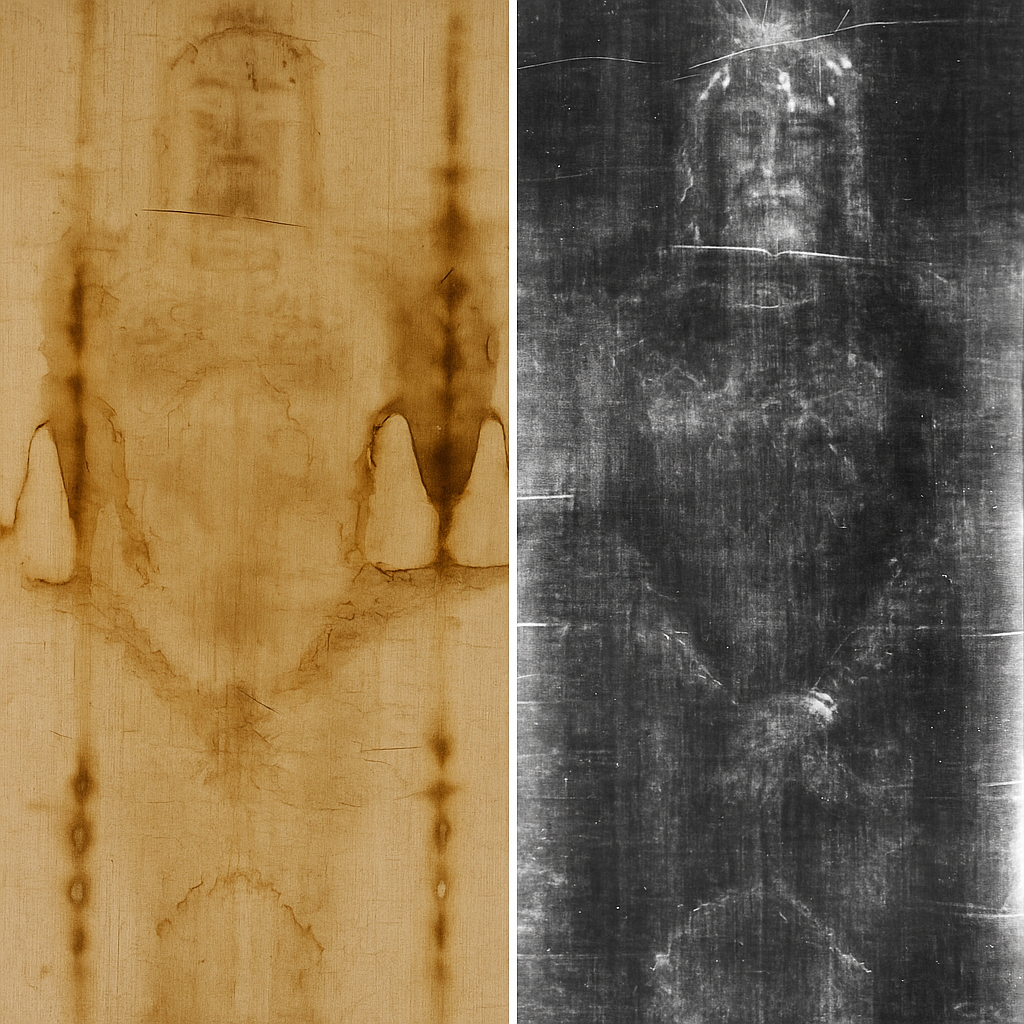1) What the Shroud Shows
- Crown of thorns: blood at the scalp in a ring-like pattern (Matt 27:29).
- Scourging: hundreds of dumbbell-shaped marks across back and legs—consistent with a Roman flagrum (John 19:1).
- Nail wounds: in the wrists, not the palms—matching Roman practice and weight-bearing anatomy.
- Pierced side: a large blood-and-serum flow at the rib area (John 19:34).
- Feet: downward blood flows indicating a vertical position on the cross.
- Face: swelling and bruising; beard pulled—Isaiah 52:14 echoes: “disfigured beyond that of any human.”
2) Image Properties That Don’t Behave Like Paint
- Superficial image: coloration affects only the outermost fibrils of the linen; fibers beneath are untouched.
- No pigments detected: repeated examinations find no brushstrokes or binder—this is not a painted icon.
- 3D spatial data: the intensity maps like relief—producing 3D information when scanned.
- Unexpected anatomy: details (wrist nails, blood flows, rigor mortis posture) outpace typical medieval art knowledge.
3) The Carbon Dating Controversy (Why People Disagree)
In 1988, a sample from one corner dated the cloth to the Middle Ages. Later textile/chemical studies argued that the tested threads came from a repaired area after fire damage, not from the original weave. Other lines of evidence—pollen from the Levant, weaving style, and fiber chemistry—suggest a much older origin. Even skeptics note: no one has replicated the image formation with medieval methods.
4) If It’s Real…
- This is the burial cloth of Jesus of Nazareth.
- Every mark matches the Gospel record—thorns, stripes, nails, spear.
- The image may be a moment imprinted—a flash no artist could stage. If so, we are looking at the shadow left by resurrection.
5) Why It Matters
The Shroud will not replace faith or force belief. But it drags the Passion out of abstraction. Words become wounds. Prophecy becomes pattern on linen. If genuine, it is a silent witness that the story Christians tell is not myth dressed in poetry—it’s history written in blood.
Closing
See first, or believe first? Thomas wanted to touch. Many of us do. The Shroud meets us there—not to end faith, but to aim it. If it is what it appears to be, then the cross and the empty tomb are not just preached—they are pictured.

